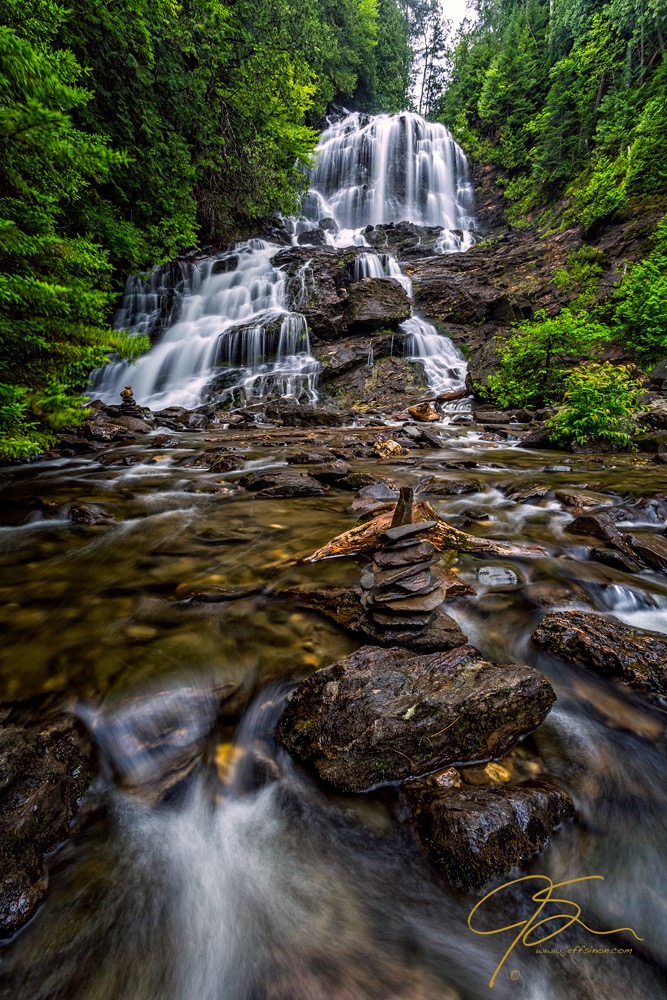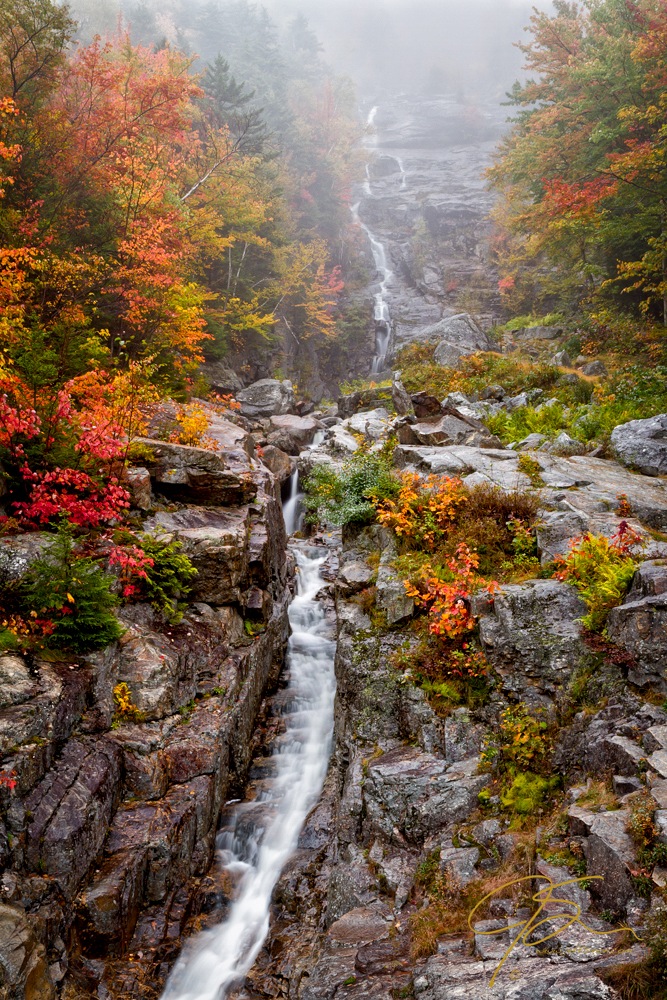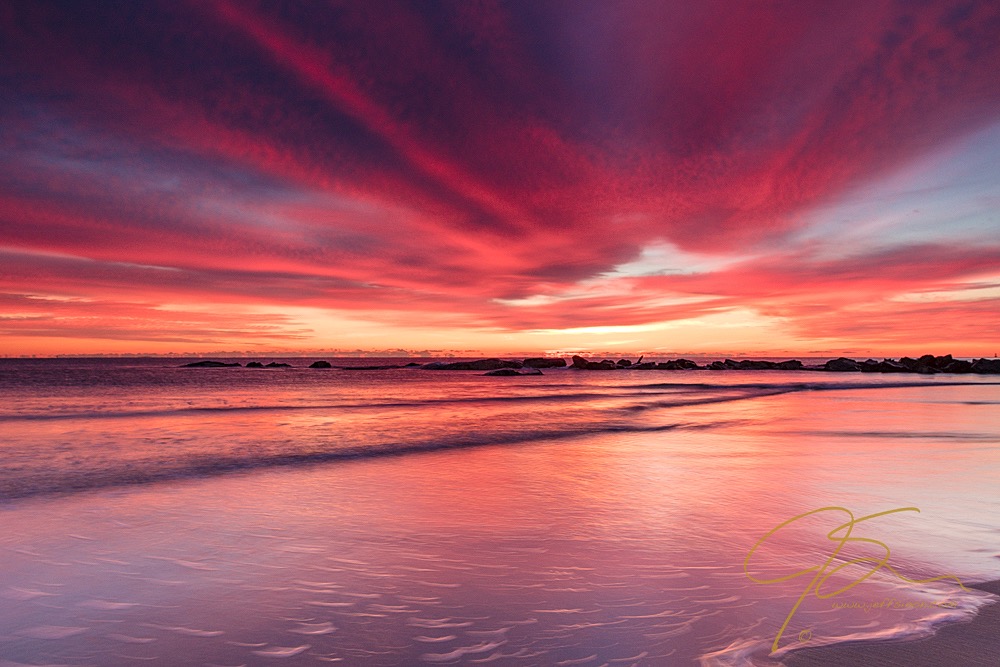How many of you only take your camera out when the weather is nice? You know, a perfectly warm day without a cloud in the sky? If that’s you, all I can say is this: You’re missing out on some of the best photographic opportunities there are when it comes to creative landscape photography.
If you ask me, blue skies are boring. I want drama. I want bad weather! (Or at least the threat of it.)
Photo opportunities in bad weather:
When it comes to weather photography, there are almost no conditions that will keep me inside if I think I can make a photograph. A little rain? Sounds like a perfect day to photograph waterfalls to me.

Maybe you want to photograph the colors of autumn. An overcast, rainy day gives the foliage an added saturation and vibrancy. Better yet, how about bright fall foliage and a waterfall, photographed on a miserable and rainy day.

How about cold? I won’t let the cold keep me and my camera inside either, even if it’s 10 below zero when I’m hoping to capture sea smoke on the New Hampshire or if the winds are whipping the windchill to well below zero while overlooking a scenic mountain.

Making the Most of Bad weather
Are we having fun yet? Bad weather — be it rain and storm clouds or snow and wind on a frigid winter day — can be some of the most miserable weather to be out photographing in. This “bad” weather can also be the best weather when it comes to providing you with the most dramatic conditions to make landscape photos. Which is why I regularly head out when most people wouldn’t even consider it.
Watch the storm radar

When planning a landscape photo shoot during a storm, I use an iPhone weather app to check the radar and track where the edge of the storm will be at sunrise and sunset. For a sunrise, I look for the leading edge of the storm; for a sunset, I look for the trailing edge.
If the weather cooperates, I could end up with an amazing, fiery sky as the sun causes the underside of the clouds to glow. Understand that you’ll win some and you’ll lose some. Quite frequently, the storm clouds will pass through more quickly than expected, blocking out the sun and preventing it from putting on a show like in the photo below.
Prepare to get wet

While gambling on the weather for photos like the one above, you’ll often end up taking photos in the rain. Bring a rain coat for yourself and something to cover your camera in case the rain really starts to come down.
There are numerous (and often expensive) rain covers available to fit most cameras. I personally use a plastic shopping bag if I need to cover my camera. Usually, unless it’s raining steadily, I just keep a small, absorbent towel handy to blot up the rain drops. I would also suggest keeping a microfiber cloth handy to wipe any water drops off of the front of your lens.
Speaking of keeping rain off the front of the lens, if your lens came with a hood, use it. If not, consider buying one. Lens hoods are great for keeping raindrops from getting on your lens’s front element and ruining a shot. Be sure to check the front of your lens often, too. There’s nothing worse than getting home and noticing all of the shots that were ruined by a great big raindrop on the front of the lens.
Brace the cold and snow

Most camera manufacturers list their camera’s minimum temperature operating range as well above the temps I regularly subject my camera to. For example, my Canon 5D Mark III has an operating range of 32 F to 104 F. I’ve subjected all of my cameras to temps as low as minus 10 with no ill effects.
Follow this advice, but take your camera into the cold at your own risk!
When it comes to photographing snow, you can use the same towel you’d use for rain to gently blot or brush the snow off of your camera. Next, try to avoid exhaling on the viewfinder. If it’s cold enough, it will first fog up and then freeze, rendering it useless. The same goes for the front of your lens.
Bring extra batteries when photographing in the cold. Low temperatures will greatly shorten the life of your camera batteries, making spares a necessity. Keep your spares in an inside coat pocket to keep them warm and prolong their life in the field.
Remember, some of the best landscape photos are made under the most adverse weather conditions. Most cameras can take it — can you?

Share tips, start a discussion or ask one of our experts or other students a question.
No Responses to “Terrible Weather, Terrific Photos: Weather Photography Tips for Any Conditions”